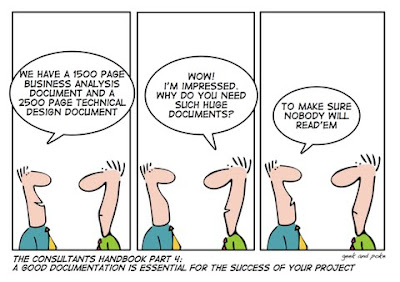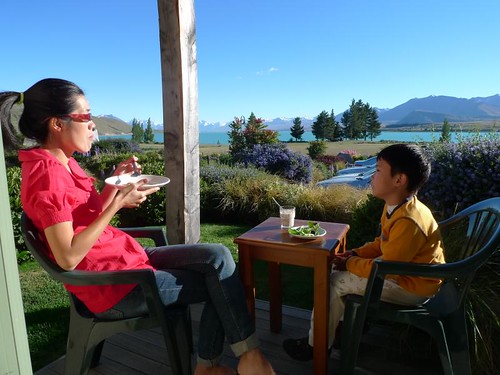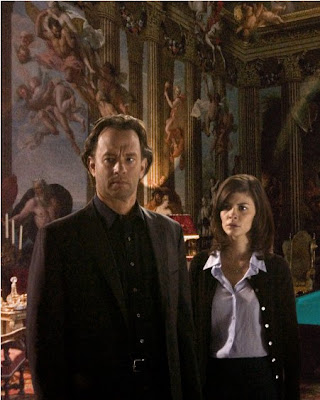
Courtesy of Geek and Poke
In the field of strategy and planning, there are two age-old dilemmas which one commonly encounters in the process of doing one’s work, namely:
1) How much research should we conduct?

Courtesy of Geek and Poke
In the field of strategy and planning, there are two age-old dilemmas which one commonly encounters in the process of doing one’s work, namely:
1) How much research should we conduct?

Well planned holidays are restful and not stressful (breakfast at Lake Tekapo, New Zealand)
We love going on overseas vacations. There is a certain buzz in the air when one is planning and arranging for a trip abroad, regardless of the duration, distance or destination.
In the age of omnipresent online options, choreographing your own holidays is entirely possible. However, one may still want to weigh the pros and cons of DIY versus having a travel agent or travel planner do it for you.

Can we allow ‘real life’ games in our museums ala Da Vinci Code and the Louvre? (source of image)
Should we allow people to ‘play’ in the museums? How much leeway should we provide for spontaneous citizen initiated activities and when should we say no?
Nina Simon of Museum 2.0 highlighted recent buzz-worthy examples of unsolicited ‘pranks’ in two hallowed institutions: The Met and the Smithsonian Institution.
Every once in a while, you come across a marketing idea so radical that you simply have to talk about it. That honour today belongs to airline company KLM and its effort in creating the highest party in the world where a DJ gets to spin music 35,000 feet in the air.
What’s cool about this effort is that it came about from a bet between KLM and two DJs/creative producers – Sied van Riel and Wilco Jung – to organise a party on board a plane for the very first time. I like how it weaves in online channels (like a blog, website, and online radio station) with a grand idea of a party for those who have the time, money and energy.
In an attempt to understand what’s hot in today’s music scene (and chill out after a tough day’s work), I’ve been viewing music videos on Youtube, checked out Billboard’s Hot 100, and listened to the most popular hits on MySpace. What I discovered was pretty fascinating – and perhaps a little shocking – for a mountain tortoise cum geek like me.
Several trends seem to be prevalent in contemporary pop music culture (at least in the US):
Have you noticed how businesses, like humans, tend to adopt a herd mentality? Some examples:
– Opening and closing hours of retail shops (normally 10 am to 10 pm, with extended hours only during festive breaks)
As I was walking back to work this afternoon, I saw the above bus stop poster by NTUC Income. What’s interesting about the advertisement was that it sought to imbue a social element to an otherwise commercial marketing platform. I suppose its also topical since the opening of the two Integrated Resorts in Singapore last year, and I like how it fused clever copywriting with the main visual.
This isn’t the first time that NTUC Income has rode on the wave of public interest, if you can recall their opportunistic flooding advertisement last June.
What do you think of the above strategy? Would such social messages work for a financial services company?
I was listening to HBR’s Ideacast recently and came across an interesting idea by Booz & Company’s Paul Leinwand and Cesare Mainardi urging companies to “have the discipline to focus intensely on what they do best”. Titled the “Coherence Premium”, the central thesis of Leinwand and Mainardi is that “sustainable, superior returns accrue to companies that focus on what they do best”.
Gaining the Coherence Premium can be done if a company aligns and interlocks internal capabilities (or core competencies ala Hamel and Prahalad) with the right external market position. This can be graphically represented as follows:

Image source
I’ll be flying off to UK for a work trip tomorrow morning, to visit some of their leading art museums and galleries, learn how they run their institutions, and explore collaborative possibilities. There’re quite a lot that we can learn from the Brits who are world leaders in the art, science and business of running museums, art galleries and cultural institutions.
On the cards are an eclectic mix of meetings that we’ll be scheduling with both private and publicly funded mueums and art galeries. They include the world famous Tate Modern which showcases international modern and contemporary art…

Courtesy of Rentoid
In an age where anything and everything is trending towards FREE, companies face many increasingly thorny dilemmas on the issue of pricing. What should one charge in order to make a profitable and sustainable living? How can one stand out from other similar businesses using price as a lever? Is there a trade-off between the number of users/subscribers/fans and actual paying customers?
Answering these questions isn’t easy. One can either choose to go with one’s gut (ala Malcolm Gladwell’s the Law of Thin Slices) or perhaps embrace a more methodical approach.